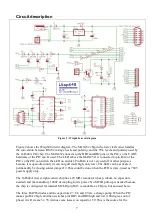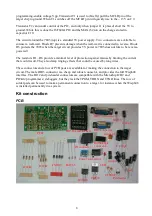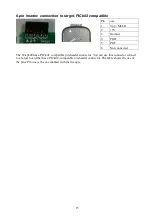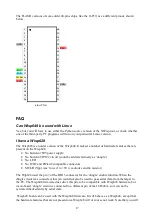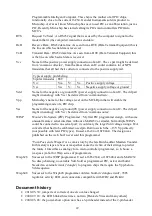
18
need a 16F648A chip. Recent Wisp628’s will have this chip, older Wisp628’s can have a 16F628
or 16F628A chip. The Wisp648 firmware does not fit in a 16F628 or 16F628A.
I don’t have a serial port
Wisp648 is designed to work with USB-to-serial converters. The performance (the time it takes to
program a chip) might be somewhat slower than with a ‘real’ serial port, but the functionality
should not be affected. It has been tested OK with converters based on Prolific and FTDI chips. If
you find a converter that does not work with a Wisp648 I am very interested.
I want to use a ZIF socket
Are you sure? In-circuit programming is so much easier. But assuming you know what you are
doing: you can of course connect a ZIF socket to a Wisp648. Just take care that you connect a
100nF capacitor over the power pins. And for target chips that have multiple ground and/or power
pins: connect them all. Note that the actual pins you must connect depend on the chip. Most chips
with the same number of pins use the same pins, but you might want to check the datasheet to be
sure.
Can I use a Wisp648 at 3.3V?
No, you can’t. At 3.3V the charge pump that creates the ~ 13V Vpp does not function correctly, the
MAX232 chip is out of spec, and the 16F648A can not run at 20 MHz. The Wisp648 is designed
for 5V only, if you want to program at another voltage you will need another programmer.
I want to copy one PIC chip to another PIC chip
Wisp648 and its PC software can be used to read the content of a supported PIC, save this content
into a .hex file, and write this file to another PIC chip, but only when the source PIC chip is not
read-protected. Read-protection is a feature that the author of a program can enable if he chooses to
do so. If he did, you are out of luck (and you probably have no business copying that chip). There
are companies that will read a read-protected chip for you (for some fee), so don’t rely on read-
protection as an infallible protection mechanism for your own product. But it will prevent copying
by anyone with only ‘normal’ tools.
Can I use Wisp648 for LVP programming?
No. But why would you want to? Wisp648 uses HVP programming, which can do everything that
can be done with LVP programming, plus a bit more (like changing the LVP enable fuse bit). Note
that after programming a chip, it makes no difference whether it was programmed using LVP or
HVP, except that you can not use LVP to change the LVP-enable bit in the configuration fuses.
Should I enable the power short?
(The power short is enabled by placing the jumper on pins J1.) Some PICs always require this
feature, some require it only with certain fuse settings (internal oscillator and internal MCLR),
some can’t be programmed when this feature is enabled, and some don’t care. To complicate
matters, some power supplies (especially expensive lab equipment) restart slowly after a short, so
they won’t work with this feature enabled. The most simple choice is to disable the power short,
until you need it. You will probably only need it when you program a PIC with internal MCLR
(MCLR pin configured as input pin).
Can I build my own Wisp648?
Yes you can. I explicitly allow anyone to build a Wisp648 for his own use. Of course I prefer you
to buy a kit or build Wisp648 from my webshop, but for some people even the price of the kit
might be too high. If that is the case for you: go ahead, build your own. The firmware and PC
software can be downloaded from my site. But don’t sell Wisp648 programmers, kits, PCBs or




